-
 Bitcoin
Bitcoin $114000
-1.31% -
 Ethereum
Ethereum $3530
-4.15% -
 XRP
XRP $3.009
0.72% -
 Tether USDt
Tether USDt $0.9997
-0.04% -
 BNB
BNB $768.9
-1.48% -
 Solana
Solana $165.1
-2.83% -
 USDC
USDC $0.0000
0.01% -
 TRON
TRON $0.3274
0.13% -
 Dogecoin
Dogecoin $0.2032
-2.22% -
 Cardano
Cardano $0.7256
-0.54% -
 Hyperliquid
Hyperliquid $38.23
-6.27% -
 Sui
Sui $3.525
-1.60% -
 Stellar
Stellar $0.3893
-1.44% -
 Chainlink
Chainlink $16.23
-3.09% -
 Bitcoin Cash
Bitcoin Cash $542.3
-4.62% -
 Hedera
Hedera $0.2436
-2.80% -
 Avalanche
Avalanche $21.79
-2.00% -
 Toncoin
Toncoin $3.683
5.76% -
 Ethena USDe
Ethena USDe $1.000
-0.02% -
 UNUS SED LEO
UNUS SED LEO $8.967
0.39% -
 Litecoin
Litecoin $108.1
1.98% -
 Shiba Inu
Shiba Inu $0.00001225
-0.96% -
 Polkadot
Polkadot $3.617
-1.37% -
 Uniswap
Uniswap $9.120
-2.53% -
 Monero
Monero $297.5
-3.36% -
 Dai
Dai $0.0000
0.01% -
 Bitget Token
Bitget Token $4.328
-1.65% -
 Pepe
Pepe $0.00001060
-0.81% -
 Cronos
Cronos $0.1346
-3.39% -
 Aave
Aave $257.6
-0.87%
How to use Coinbase Wallet for DeFi?
Coinbase Wallet gives you full control over your crypto, enabling secure access to DeFi apps like Uniswap and Aave on Ethereum, Polygon, and more.
Aug 01, 2025 at 11:43 pm
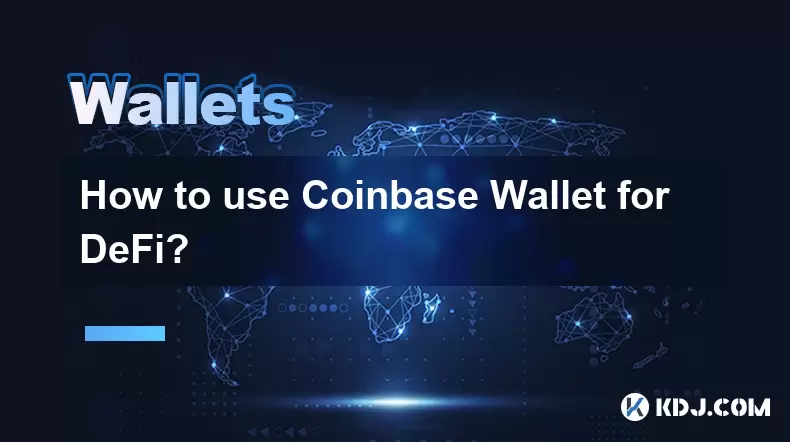
Understanding Coinbase Wallet and Its Role in DeFi
The Coinbase Wallet is a self-custody cryptocurrency wallet that allows users to store, send, receive, and interact with decentralized applications (dApps) on various blockchain networks. Unlike the Coinbase exchange, which is a custodial platform, Coinbase Wallet gives users full control over their private keys, making it ideal for DeFi (Decentralized Finance) interactions. DeFi refers to financial services built on blockchain technology, such as lending, borrowing, staking, and trading, without intermediaries.
To use Coinbase Wallet for DeFi, users must understand that it functions as a gateway to the decentralized web (Web3). This means the wallet connects directly to dApps on networks like Ethereum, Binance Smart Chain, Polygon, and others. The wallet supports ERC-20 tokens, NFTs, and smart contracts, which are foundational to most DeFi platforms. By managing your own keys, you maintain ownership of your assets while accessing a wide range of decentralized financial tools.
Setting Up Coinbase Wallet for DeFi Access
Before engaging with DeFi protocols, you need to properly set up your Coinbase Wallet. Start by downloading the Coinbase Wallet app from the official App Store or Google Play. Upon opening, select “Create a new wallet” and follow the prompts. You will be asked to create a strong password and securely back up your recovery phrase—a sequence of 12 or 24 words. This phrase is critical; it is the only way to recover your wallet if you lose access.
- Write down the recovery phrase on paper and store it in a secure, offline location.
- Never share the recovery phrase with anyone, not even Coinbase support.
- Verify the recovery phrase by re-entering it in the app when prompted.
- Once verified, your wallet is ready for use.
After setup, you can view your public wallet address, which you’ll use to receive funds. To participate in DeFi, you’ll need to fund your wallet with cryptocurrencies like ETH, MATIC, or BNB, depending on the network you plan to use. These assets are required to pay gas fees when interacting with smart contracts.
Connecting Coinbase Wallet to DeFi Platforms
To interact with DeFi platforms such as Uniswap, Aave, Compound, or SushiSwap, you must connect your Coinbase Wallet to these dApps. Most DeFi platforms operate through web interfaces accessible via mobile browsers. Open the built-in browser in the Coinbase Wallet app and navigate to the official website of the DeFi platform you wish to use.
- Tap the “Connect Wallet” button on the dApp’s homepage.
- Select “Coinbase Wallet” from the list of available wallets.
- Confirm the connection request in the Coinbase Wallet app.
- Grant permissions only to trusted and verified dApps.
Once connected, the dApp can read your wallet balance and initiate transactions, but it cannot access your funds without your explicit approval. Every transaction, such as swapping tokens or depositing into a liquidity pool, will require you to review and sign it within the Coinbase Wallet app. This ensures that you maintain full control over your assets.
Executing DeFi Transactions Using Coinbase Wallet
After connecting to a DeFi platform, you can begin executing transactions. For example, if you want to swap tokens on Uniswap, follow these steps:
- Choose the token you want to swap from and the token you want to receive.
- Enter the amount you wish to trade.
- Review the estimated output, slippage tolerance, and network fee.
- Tap “Swap” and confirm the transaction in the Coinbase Wallet app.
The wallet will display the transaction details, including gas cost and recipient contract address. You must manually approve the transaction by entering your wallet password or using biometric authentication. Once confirmed, the transaction is broadcast to the blockchain and processed by network validators. You can track its status using a blockchain explorer by tapping the transaction in your wallet’s activity feed.
For liquidity provision or yield farming, you’ll need to deposit pairs of tokens into a liquidity pool. The process involves approving token spending limits and then depositing the assets. Each approval and deposit requires a separate transaction, so ensure you have enough cryptocurrency to cover multiple gas fees.
Managing Assets and Security in DeFi
Using Coinbase Wallet for DeFi requires vigilant asset and security management. Always double-check the contract addresses of dApps before connecting or approving transactions. Scammers often create fake versions of popular platforms to steal funds. Use only official URLs and verify dApp legitimacy through community forums or audit reports.
Enable two-factor authentication (2FA) on your device and keep your operating system and wallet app updated. Avoid granting unlimited token approvals; instead, set specific spending limits when prompted by dApps. You can revoke unnecessary approvals through the wallet’s settings under “Token Approvals” to reduce risk.
Monitor your transaction history regularly for unauthorized activity. If you suspect a security breach, transfer your funds to a new wallet immediately using your recovery phrase. Never enter your recovery phrase into any website or app other than the official Coinbase Wallet interface.
Frequently Asked Questions
Can I use Coinbase Wallet with non-EVM blockchains for DeFi?
Yes, Coinbase Wallet supports non-EVM chains like Solana. For Solana-based DeFi apps, ensure the dApp supports wallet connectivity via WalletConnect or Solana’s web3.js. Switch the network in the wallet settings before connecting.
What should I do if a DeFi transaction gets stuck?
If a transaction is pending, open the transaction in your wallet and select “Speed Up” to increase the gas fee. Alternatively, choose “Cancel” to replace it with a higher-fee transaction. This requires ETH for gas, even if the original transaction failed.
How do I claim DeFi rewards or tokens earned in a protocol?
Navigate to the DeFi platform where you earned rewards. Look for a “Claim” or “Harvest” button. Confirm the action in your Coinbase Wallet. The tokens will appear in your wallet once the transaction is confirmed.
Is it safe to keep my wallet connected to DeFi apps after use?
It is safer to disconnect your wallet after each session. While connected, dApps can still read your balance and initiate transaction requests. Disconnecting reduces exposure to potential phishing attacks.
Disclaimer:info@kdj.com
The information provided is not trading advice. kdj.com does not assume any responsibility for any investments made based on the information provided in this article. Cryptocurrencies are highly volatile and it is highly recommended that you invest with caution after thorough research!
If you believe that the content used on this website infringes your copyright, please contact us immediately (info@kdj.com) and we will delete it promptly.
- Ethereum's Rocky Climb: Analysts Eye New ATH Despite Recent Dip
- 2025-08-02 10:30:11
- Ethereum Price, ETF Inflows, and ETH Tokens: What's Driving the Market?
- 2025-08-02 10:50:12
- Ethereum, ADA, and Price Support: What's Next for These Crypto Titans?
- 2025-08-02 10:50:12
- XRP, Ripple, and Transfers: Decoding the Latest Moves
- 2025-08-02 11:10:12
- Injective (INJ) Price Analysis: Breakout or Breakdown?
- 2025-08-02 10:55:35
- Cardano Price, Pi Network, and Crypto Presales: What's the Buzz?
- 2025-08-02 08:50:12
Related knowledge

What is a watch-only wallet in Trust Wallet?
Aug 02,2025 at 03:36am
Understanding the Concept of a Watch-Only WalletA watch-only wallet in Trust Wallet allows users to monitor a cryptocurrency address without having ac...

How to switch between networks in Trust Wallet?
Aug 02,2025 at 12:36pm
Understanding Network Switching in Trust WalletSwitching between networks in Trust Wallet allows users to manage assets across different blockchains s...
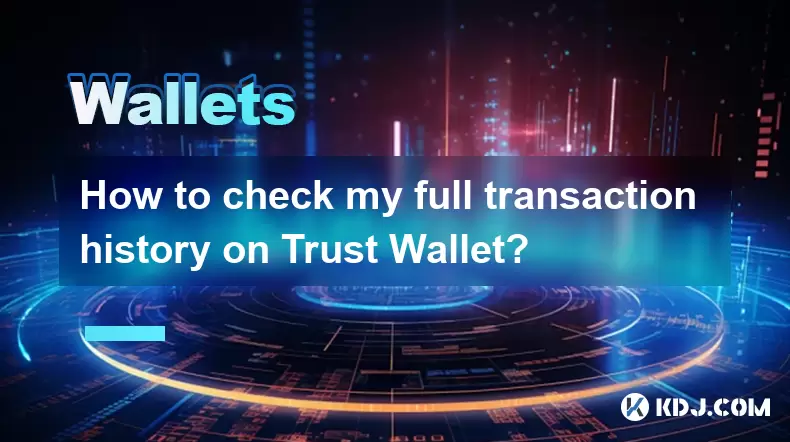
How to check my full transaction history on Trust Wallet?
Aug 02,2025 at 09:24am
Understanding Transaction History in Trust WalletTrust Wallet is a widely used non-custodial cryptocurrency wallet that supports a broad range of bloc...
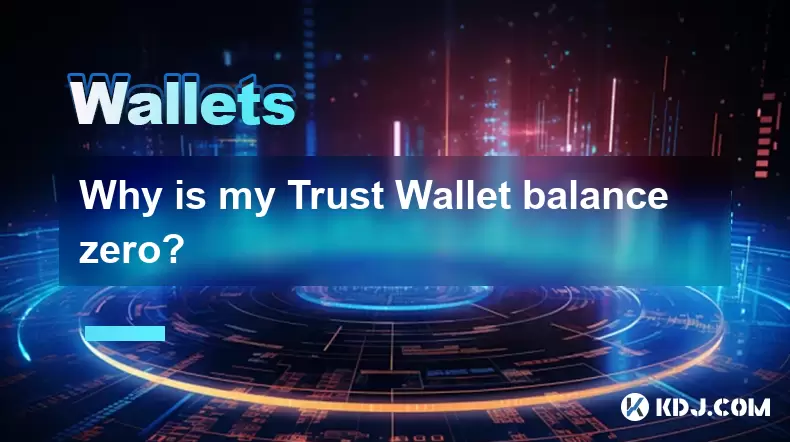
Why is my Trust Wallet balance zero?
Aug 02,2025 at 03:49am
Understanding Trust Wallet Balance Display IssuesIf you're seeing a zero balance in your Trust Wallet despite knowing you've previously received or se...
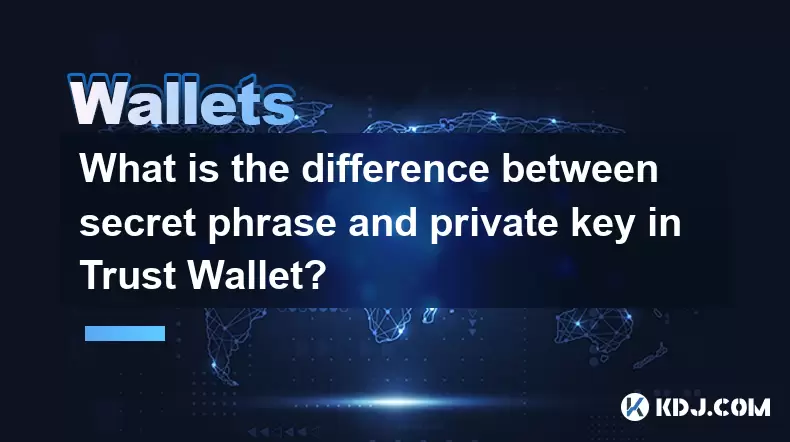
What is the difference between secret phrase and private key in Trust Wallet?
Aug 02,2025 at 09:49am
Understanding the Role of a Secret Phrase in Trust WalletThe secret phrase, also known as a recovery phrase or seed phrase, is a sequence of 12 or 24 ...
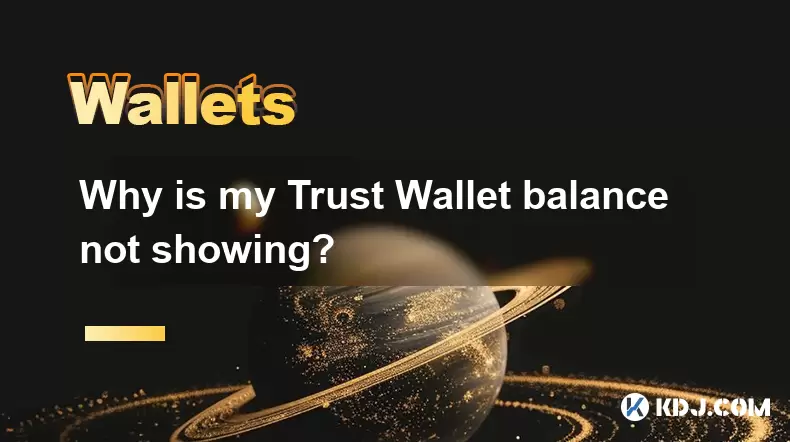
Why is my Trust Wallet balance not showing?
Aug 02,2025 at 06:01am
Understanding Trust Wallet Balance Display IssuesMany users encounter the issue where their Trust Wallet balance is not showing despite having previou...

What is a watch-only wallet in Trust Wallet?
Aug 02,2025 at 03:36am
Understanding the Concept of a Watch-Only WalletA watch-only wallet in Trust Wallet allows users to monitor a cryptocurrency address without having ac...

How to switch between networks in Trust Wallet?
Aug 02,2025 at 12:36pm
Understanding Network Switching in Trust WalletSwitching between networks in Trust Wallet allows users to manage assets across different blockchains s...

How to check my full transaction history on Trust Wallet?
Aug 02,2025 at 09:24am
Understanding Transaction History in Trust WalletTrust Wallet is a widely used non-custodial cryptocurrency wallet that supports a broad range of bloc...

Why is my Trust Wallet balance zero?
Aug 02,2025 at 03:49am
Understanding Trust Wallet Balance Display IssuesIf you're seeing a zero balance in your Trust Wallet despite knowing you've previously received or se...

What is the difference between secret phrase and private key in Trust Wallet?
Aug 02,2025 at 09:49am
Understanding the Role of a Secret Phrase in Trust WalletThe secret phrase, also known as a recovery phrase or seed phrase, is a sequence of 12 or 24 ...

Why is my Trust Wallet balance not showing?
Aug 02,2025 at 06:01am
Understanding Trust Wallet Balance Display IssuesMany users encounter the issue where their Trust Wallet balance is not showing despite having previou...
See all articles

























































































